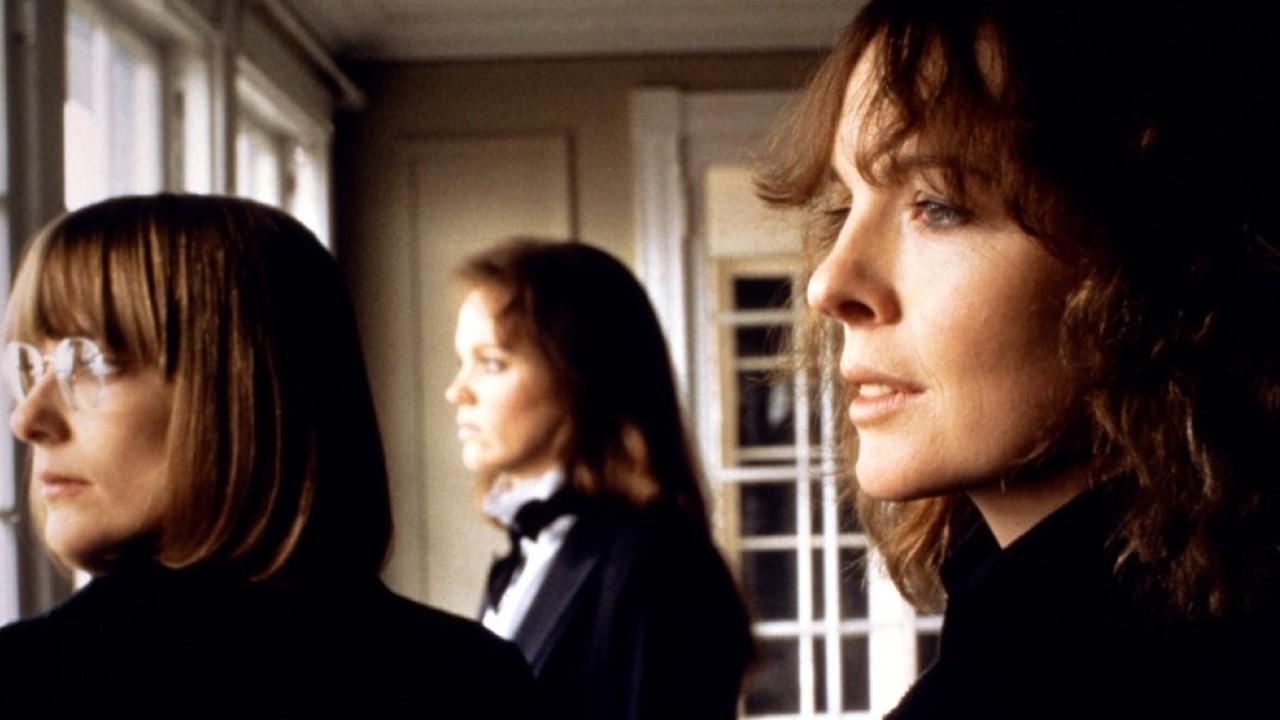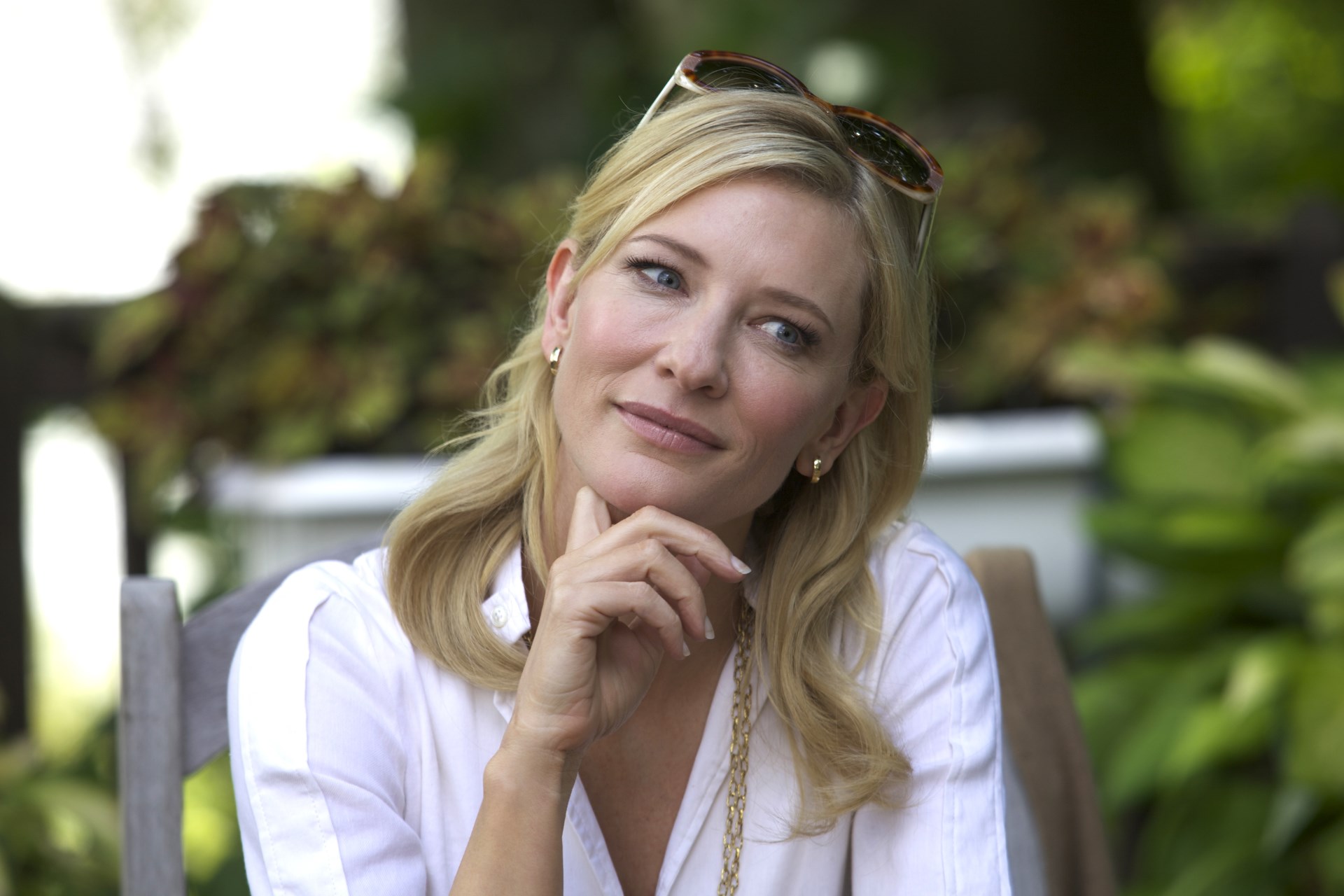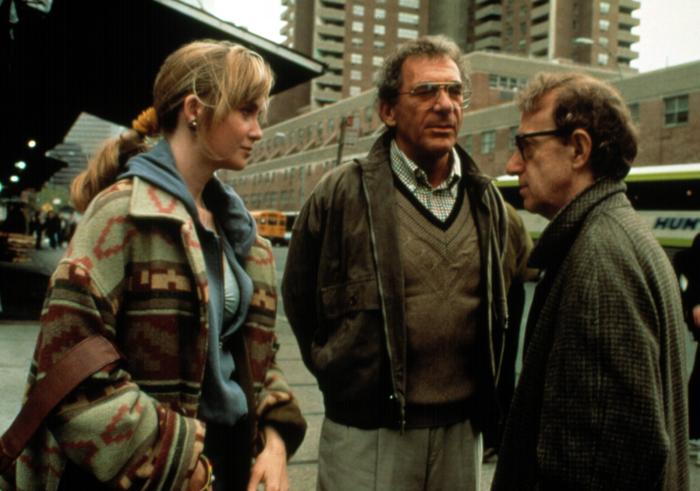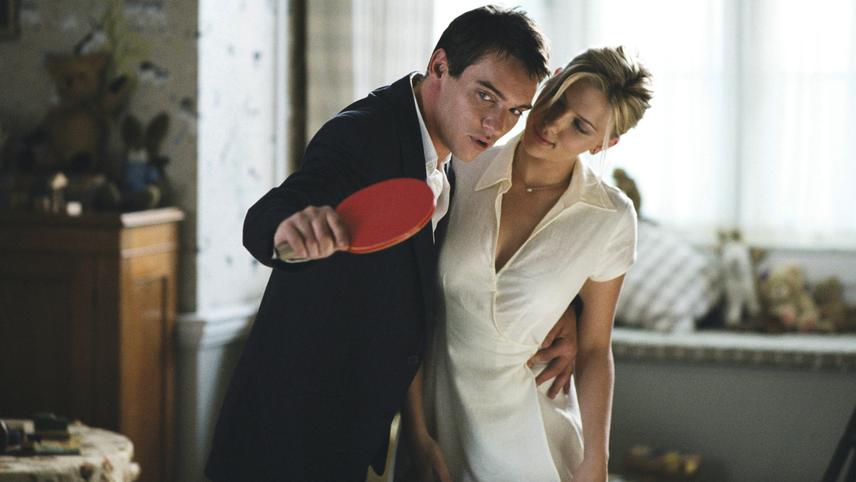5. Another Woman (1988)

Another Woman isn’t as known as many other films by Woody Allen, but those who have seen it agree on its profoundness and on the fact that Gena Rowlands’ performance as philosophy professor Marion Post is as complex as it is flawless. For his third attempt at a dramatic film (after Interiors and September) Woody Allen went back to his main inspiration for the genre, Ingmar Bergman, and also worked with Bergman’s usual director of photography Sven Nykvist.
The woman of the title is Mia Farrow’s character, whose therapy sessions Marion Post casually hears while she’s trying to finish a book of hers. The other woman’s confessions lead Marion to examine her life, and through a series of flashbacks and dream sequences she reencounters the most important people from her past.
This existential movie has the merit of not owing too much to Bergman’s style; even if it’s clearly modeled after the Swedish director’s work, the film still manages to find an original way of telling its story. Up to that point, Another Woman was the most artistically aware of all the movies Allen had produced by venturing into less known territory.
4. Interiors (1978)

Interiors is the first Woody Allen film in which he doesn’t appear, and it is explicitly inspired by the work of Ingmar Bergman; an influence on the writing of the dialogues was playwright Anton Chekhov. The film is completely deprived of humor (as well as music) and follows the conflicts of a family composed by the aging and separated Arthur and Eve, their three daughters, and the daughters’ partners.
Like in Hannah and Her Sisters (1985), the three young female characters all have artistic ambition, but while Renata and Flyn (played by Diane Keaton and Kristin Griffith) have found their artistic direction, namely poetry and acting, the third sister Eve (Geraldine Page) feels constantly unsatisfied and can’t figure a life path for herself. The characters are constantly looking for fulfillment through artistic success, as a way to strive for greatness but also to satisfy their ego.
Their hypocrisy is subtly described through the dialogues, and serves as the background to the main family crisis of the film, Eve’s denial of her separation with her husband, which will inevitably lead to a tragic ending after Arthur decides to remarry with a new woman who represent the easy-going attitude towards life that the three sisters and their mother seem incapable of adopting.
In 1978 most people struggled to see Woody Allen as a a Bergman-like auteur; to them, he still was the man who wrote the cello gags of Take the Money and Run.
After almost forty years, Interiors can be be recognized as a mature and elegant take on a certain style of film; still, what keeps this Woody Allen film from being praised as others is its excessive adherence to that particular style of film. By the time the film ends, the feeling is that Woody Allen only partially conveyed his unique personal touch to the picture.
3. Blue Jasmine (2013)

The most appreciated of Woody Allen’s recent films, Blue Jasmine revolves around Cate Blanchett’s performance as a fallen-in-disgrace wife who relocates at her sister’s after the arrest of his husband for fraud.
The movie came out in 2013 and was influenced by the consequences of the 2008 economical crisis; Allen’s beloved New York appears only in the flashbacks that show Jasmine’s wealthy life in Manhattan, while most of the movies is set in San Francisco, where Jasmine relocates. Many have pointed out the plot’s resemblance to the one of A Streetcar Named Desire.
Woody Allen’s work has often reached his heights with well-written female characters, not only with his so-called muses (Diane Keaton, Mia Farrow, Scarlett Johansson), but also with less frequent collaborators (like Dianne Wiest, Mira Sorvino or Penelope Cruz), and this is the case; Jasmine is a neurotic character, constantly on either or alcohol, who systematically refuses to accept her new lifestyle. Smart and sophisticated, she proves herself to be completely unaccustomed and unable to adapt to the modest life of her sister Ginger.
Perhaps the most dramatic aspect of Blue Jasmine is the unforgiving eye Allen adopted for it; for example, while Jasmine is certainly ungratefully judgmental of her sister, it is also true that Ginger lacks the self-respect to find an healthy relationship for herself, and generally none of the main characters ends up being really pleasant to the viewer.
Woody Allen’s take on contemporary American society, both in its wealthy portion and not, is as bleak as always, and for this particular feature he removed the usually redeeming element of outspoken humour.
2. Husbands and Wives (1992)

Husbands and Wives doesn’t draw a distinct line between its lighter aspects and its dramatic ones, but ultimately serves as one of Woody Allen’s most unforgiving depictions of romantic relationships. The film is built around two couples and their failures, betrayals and hypocrisies. Mia Farrow, here at her 13th appearance in a movie of his, plays Woody Allen’s wife; this was the last film they made together since during production the couple fell apart, not unlike the one they played on the film.
For a Woody Allen film, Husband and Wives is stylistically experimental; the camera work (the DP is Carlo di Palma) resembles that of a documentary, which means hand-held camera, long takes, fast cuts and seemingly natural lighting (with the addition of on-camera interviews by the protagonists).
It would be almost dizzying to follow a story narrative with such a fragmented visual outcome if it wasn’t for the dialogue, which balances the film’s rhapsodic photography style and is one of the most authentic and overall best Woody Allen has ever produced.
Every choice of words, every hesitation, every gesture gives some clue to the character’s personality without revealing it too easily. The first person to not understand a character’s nature is the character himself; in other words, everyone seems to be lying to himself in some way. With Husband and Wives, Woody Allen seems to have perfected the character depiction he started to strive for with Interiors.
1. Match Point

Match Point is the first of the still going series of “European Woody Allen movies”, and the director stated it is one of the few films he really feels satisfied of.
Released in 2005, Match Point was quickly recognized as the true return to form of a great director who was then coming from a long string of flawed movies; Woody Allen’s filmography seems almost cyclical in its alternating unsatisfying movies and masterfully crafted successes. He has had more comebacks of public and critical success than any other director in cinema history.
Considering Woody Allen’s filmography in its entirety, the film doesn’t stand as particularly original in its Dostojevskian themes (Crime and Punishment is explicitly present in the film) and its use of murder as a plot point, but it does develop a striking philosophical reflection on the role of chance in our lives, as well as an acute social commentary on social climbers (here represented by Jonathan Rhys-Meyers’ character).
Match Point builds itself from the same material of many of Woody Allen films but stands out among them due to its structural balance and its persistent, but subtle tension: like in every tragedy that works, the spectator never gets rid of the feeling that every single action from the protagonist is somehow leading him to ruin.
Moreover, Scarlett Johansson’s character, her sensuality and her neurosis function as the main attraction for the protagonist and hence are the driving force for the whole film; it had been years since Woody Allen had been really capable of creating believable and full-round characters, and it’s easy to see how all of this was possible due to the dramatic setting of the movie.
In order to be considered a compelling filmmaker this late in his career, Woody Allen needed to shy away from comedy; his masterpiece was doing so with a tightly crafted and almost flawless script.
Author Bio: Riccardo Basso is an Italian cinephile specializing in Humanities and Philosophy. He has only recently started writing about his favorite interest, cinema, but wishes to continue doing it (just don’t tell his cinephile friends he has seen every 007 movie at least three times).